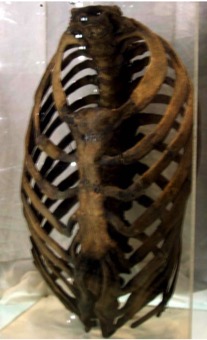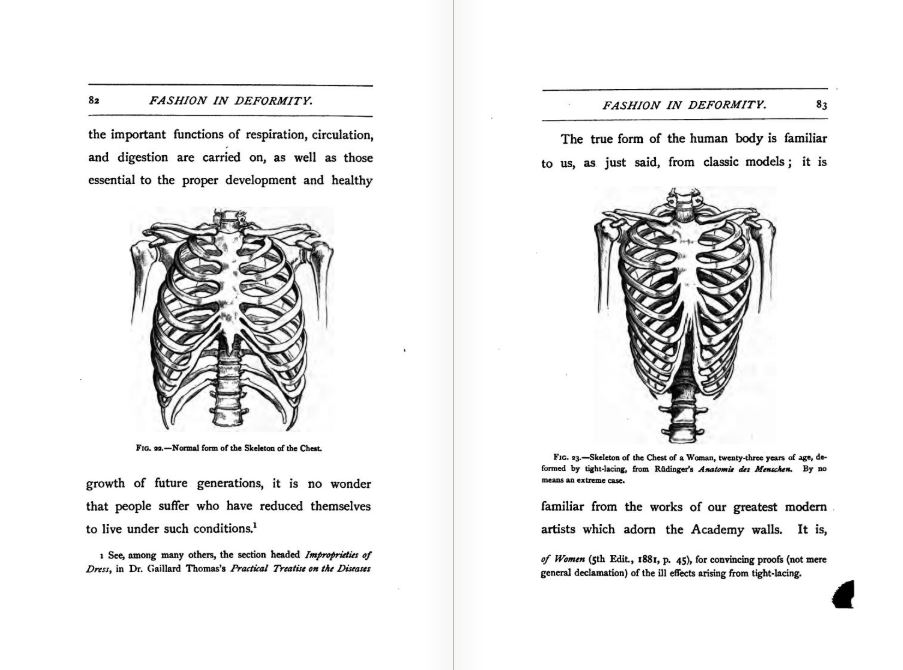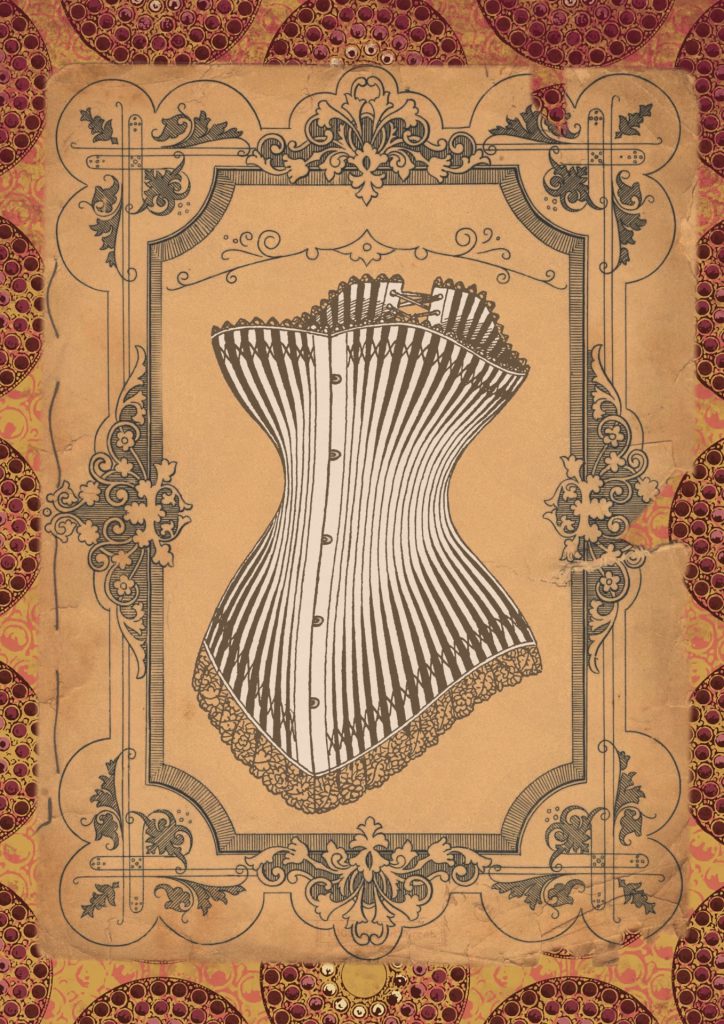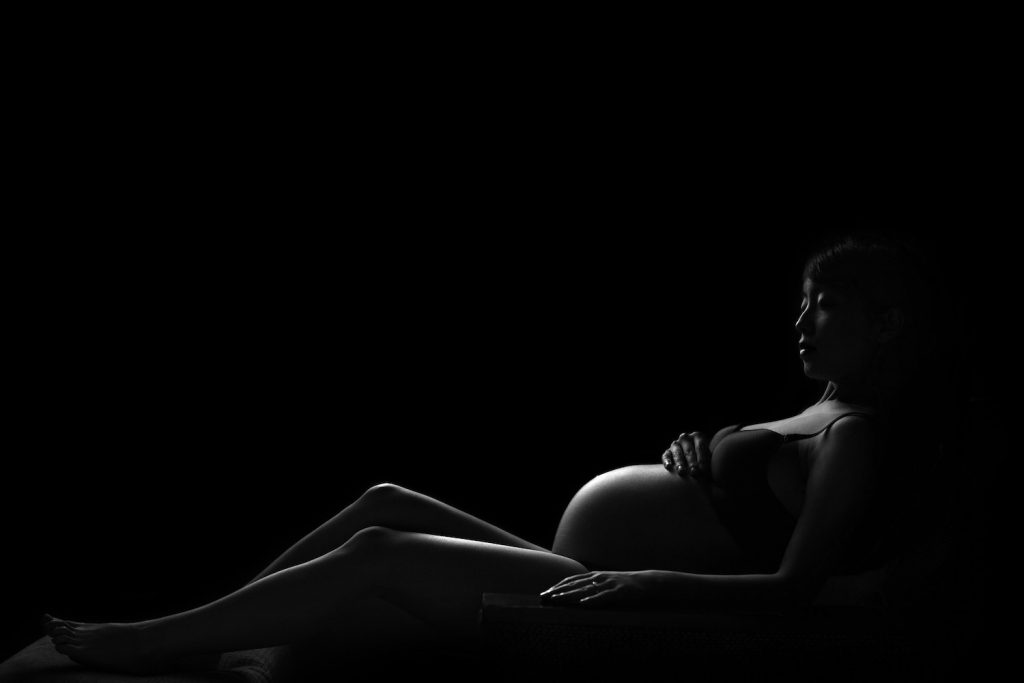How the Cultural Becomes Biological: Evidence for Corseting in the Skeletal Record
by Hannah Martin
Humans are exceptionally skilled at physically embodying their cultures, so much so that skeletal structures themselves may be altered due to extremely pronounced adaptation to cultural environments. Corseting has long been the subject of many discussions centered on gender and body modification, but little research has been done on the effects of corseting on the skeleton. This paper will employ a humanistic bioarchaeological perspective to explain the impact of habitual tightlacing on the ribcages, pelves, and spine of women during the Victorian era via primary documents, historical resources, and bioarchaeological research on the subject. By analyzing these corseted specimens and combining knowledge gained from both primary resources and historical research, this paper will educate readers on the day-to-day lives and struggles Victorian women endured as a result of gendered expectations (of beauty? Femininity? Womanhood? Fashion?).
Humans modify our bodies from their natural states; whether through historical head shaping and neck elongation, or contemporaneous piercings and tattoos, we have encountered body modifications throughout history. While there are many ways cultural standards can influence the skeleton, intentional body modification is perhaps the most intriguing. While humans are not the only creatures that modify our physical forms in accordance with specific codes, we have certainly implemented the most drastic methods, like skeletal modification, to do so. In this paper, I will employ a humanistic perspective, supported by historical and contemporary scholarship, to explore how culture becomes permanently ingrained in human bodies, specifically focusing on the Victorian standards of feminine body shapes in western societies, the effects of tightlacing on the skeleton, and what the remains of one woman may be able to tell us about corseted life.
Tightlacing is the practice of lacing one’s corset to an uncomfortably tight level in order to modify the shape of the body. Most common in Victorian era Western societies, tightlacing has escaped the spotlight of bioarchaeology, perhaps because the practice lacks the so-called exoticism of non-Western cultural practices like footbinding, etc.. As a result, little bioarchaeological research has been done on tightlacing; although there have been studies of skeletal analyses related to corseting, much of the evidence in this essay will be supplemented by historical documents and relevant contemporary research.
A Brief History of the Corset
While there are still niche communities that practice tightlacing, corsets were mainly in the spotlight of mainstream western culture for about 400 years, from the late 16th century into the early 20th century (Steele 2001). Despite this, the form and extent to which women desired to alter their shapes changed significantly throughout those years. The first corsets appeared among aristocratic women in the Renaissance as a revolutionary means of conforming the body to clothing, rather than clothing conforming to the body. These early corsets were made of varying material—many of them made of metal, resembling a sort of cage. These corsets shaped the flesh into what was considered a desirable shape with pronounced, high breasts and a tapered waist. With the emergence of the corset also came a new treatment for spinal diseases and disorders, though this use was far less common among men (Moore, Buckberry 2016). Tightlacing slowly became present amongst the most determined and economically privileged women. The famous, cartoonish hourglass body shape emerged in the 19th century when the cultural desire for a small waist reached its peak. As tightlacing increased in popularity, however, it became more than a standard of beauty for elite women. By the end of the 19th century, tightlacing became a dangerous competition between women in order to see who could achieve a “wasp waist” measuring 18 inches or less, no matter the physical or emotional consequences. Aside from a growing discontent with the tightlacing aesthetic, some men published treatises against the practice, claiming that tightlacing had adverse effects on the body and could cause tuberculosis, cancer, gallstones, and “congestion of the blood” (Steele 2001).
A humanistic perspective is essential when exploring a polarized subject like corsetry and tightlacing within a field as easily dehumanized as bioarchaeology. Analyzing the remains and accounts of several 18th and 19th century women will illuminate the harmful effects of tightlacing as well as the horrors of corset-related deformation. (Louisa Courtauld, born in 1729 was an affluent English woman living in Victorian London. Louisa’s status as the daughter of Pierre Ogier, a wealthy silk merchant, suggests that she lived a life of luxury and domesticity only awarded to an upper-class woman. Accordingly, Louisa wore a corset her entire life, in order to meet contemporary, gendered expectations of femininity and beauty. Despite her relatively privileged life, the pains she experienced from corseting are illustrated through the skeletal remains of her contemporaries. While Louisa’s story deals more with issues in the realm of soft tissue, the skeletal deformations of her fellow corset-wearers will be able to tell us a lot about her life.
Effects of the Corset on the Body
The bioarchaeological record reveals the numerous adverse side effects of tightlacing. One condition, dubbed “chicken breast,” consisted of lung atrophy and collapse due to fractured ribs, which were the result of intense pressure from tightlacing. While healing, women had to remain completely immobile. Because this injury was prevalent during an era notorious for its lack of medical awareness and access to necessities, women healing from “chicken breast” risked contracting pneumonia and dying (Summers 2001).
In terms of soft tissue, Victorian medical doctors often wrote about the effects of tightlacing on the liver. Autopsies of corseted women usually revealed an elongated, displaced liver—sometimes even with permanent rib impressions due to long-term pressure from the corset (Schnabel 1986, Gibson 2017). Some rumors even spread about a woman who had “laced herself so hard that she cut her liver right in half, and died in consequence” (Steele 2001). While having one’s liver cut in half imposes a definite threat to well-being, there remains no proof that anything even resembling this event ever happened. Moreover, the liver is an incredibly elastic organ in that it can experience marked levels of deformity without undergoing any significant change in function. People are also observed to withstand serious loss of liver function without experiencing noticeable or alarming health problems (Gibson 2017). However, while physical liver damage can reach markedly high levels before organ failure becomes a threat, the pain of active physical liver deformation would certainly have been felt.
Although tightlacing proved to be a hazard for women, the many male doctors neglected to believe women who decided to seek medical attention for their corset-related ailments. Because Victorian society interpreted women to be intellectually inferior to men, women’s suffering due to vanity—a decidedly non-intellectual pursuit according to Victorian men—was deemed acceptable by many authorities in the medical field (Steele 2001). Furthermore, appearing to be in good health was considered unfeminine in Victorian society. Feminine women were expected to be fragile, weak, and pale, especially among the uppermost classes One drastic way to achieve this look of perpetual ill health was through extreme body modification like corseting. As a result of this feminine standard, the increased outcry by men against tightlacing for health reasons only led to an increase in tightlacing among women, who believed that organs had room to move around because there were “cavities” in between them (Summers 2001). By creating the strict Victorian cultural standards of beauty and feminine bodyscapes, women responded to culture and in doing so changed their biology. The functions and organization of women’s bodies were permanently altered by tightlacing.
Habitual corseting severely impacts the skeleton which leaves distinctive traces in the bioarchaeological record. Unnatural compression of the ribs into a more cylindrical form, described as “downward warping,” leads to reduced lung capacity for tightlacers. Spines became straight and less bound to the natural S-curve shape seen in most human skeletons. Furthermore, pelves of women with deformed ribs have more constricted pelvic inlets—specifically, a more constricted arcurate line length and transverse diameter of the inlet—than those of non-corseted women. This deformity could have been an obstacle during childbirth (Klingerman 2008). Thus far, no evidence of significant deformation of the bi-iliac breadth has emerged, which suggests that while pelvic inlets were subject to deformation, they were likely caused by stunted growth due to childhood corseting rather than habitual corseting. Remains such as those studied in Gibson (2017) and Klingerman (2008) provide proof of biological changes caused by imposed cultural standards.

Ribcage of a lifelong corseting woman, on display at the Royal College of Surgeons London, England. Klingerman (2008)
Davies (1982), along with countless other historical, medical, and non-medical treatises (e.g., Haller and Haller 1974, Kellog 1900), asserts that tightlacing led to a general decreased female fertility and increased stillbirths in the 19th century. Summers (2001) also provides historical evidence that tightlacing may have been used as a means of birth control and pregnancy termination. Some women, however, may not have intentionally terminated their pregnancies or decreased their fecundity, especially given the expectations of women to provide offspring to continue the husband’s legacy. While birth rates and infant health among lower-class, more loosely corseted women may not have suffered significantly (though it still was not great due to lack of amenities), those of middle and upper class women, among whom tightlacing was the norm, certainly declined. Klingerman’s study (2008) of corset-deformed remains from a post-Medieval cemetery in Spitalfields, London may be able to shed light on this issue.
One woman who suffered from the adverse effects of tightlacing on fertility was Louisa Courtauld, buried in the same cemetery from which Klingerman’s remains were excavated. Her family settled in England and became one of the most successful silk-manufacturing dynasties in London. In August 1749, Louisa married Samuel Courtauld, a goldsmith, and became pregnant with their first child within the year. Unfortunately, the baby died five days after birth, and Louisa did not conceive again for over two years. This long interbirth interval could have been the result of corseting, which has been proven to cause abortions, reduce fertility, and impede sex drive. While Louisa was pregnant at least eight times, only four of her children survived to adulthood, and she miscarried several times (Cox 1996). Even though Louisa’s figures may not seem anomalous to other birth rates for the period, her likely possession of skeletal deformities cannot be overlooked. Klingerman asserts that the pelvic deformities that arise from tightlacing made childbirth difficult (which seems to be true—foreceps were commonly used to extract the baby during this period; Gau 1998). These deformities also decreased sex drive due to side effects such as fatigue, fainting, headaches, and uterine displacement (Klingerman 2008). Louisa Courtauld may not have intended to affect her fertility or motherhood, but by adhering to cultural standards of beauty, she altered her biological structure, and perhaps lost four or more children likely due to corseting. Although there is no certainty that Louisa’s remains were analyzed in Klingerman (2008), the rate and severity of rib and pelvic deformation among the elite female skeletons from this and other studies should serve as an indicator of Louisa’s skeletal structure. Furthermore, her troubles with fertility and childrearing serve as a testament to the effect of tightlacing on soft tissues and the health of the fetus.
While the cultural practice of tightlacing has already been shown to have biological effects on the skeleton, Louisa’s story, as well as the untold stories of countless other tightlacing women, proves that habitual corseting in the past negatively affects unborn children (i.e., pressure from corseting adversely affecting a fetus’ health), in much the same way that smoking cigarettes or consuming alcoholic beverages can affect fetuses today (Klingerman 2008). So while mothers’ conformity to Victorian beauty standards was already reflected in their skeleton, their continued practice of corseting while pregnant likely became biologically embedded in their unborn children as well. Many treatises of the time and conjectures from our time of the Victorian era assert the notion of child deformities thanks to corseting while pregnant using special maternity stays (Summers 2001), and thus it would be reasonable to assume corseting may have been used as a means of terminating unwanted pregnancies, but due to the lack of firsthand Victorian sex-related accounts, little research has actually been done on the topic. Until then, we can only imagine the effects seen in fetuses and infants of the time.
Childhood Corseting
While the side effects from habitual corseting may seem horrific, there are differing accounts of the negative effects of tightlacing on life expectancy in Victorian times (Klingerman 2008, Gibson 2017). Younger female skeletons, however, like a juvenile female analyzed in Gibson’s study with significant corset-related rib deformation, may have suffered fatal complications from tightlacing, and succumbed to death at an early age. Child corseting was fairly common in the Victorian era, as the desire for a “wasp waist,” increased. While most corseting began with the onset of puberty, some female children as young as 4 began wearing corsets regularly in order to ensure as small a waist as possible in womanhood (Summers 2001). One young woman who calls herself “Mignonette” writes of her childhood corseting experience, which began when she was only 14 years old, to be published in The Englishwoman’s Domestic Magazine in 1867 (Lord 1868):
Owing to the absence of my parents in India, I was allowed to attain the age of fourteen before any care was bestowed upon my figure; but their return home fortunately saved me from growing into a clumsy, inelegant girl; for my mamma was so shocked at my appearance that she took the unusual plan of making me sleep in my corset. For the first few weeks I occasionally felt considerable discomfort, owing, in a great measure, to not having worn stays before, and also to their extreme tightness and stiffness. Yet, though I was never allowed to slacken them before retiring to rest, they did not in the least interfere with my sleep, nor produce any ill effects whatever. …fearing that, at so late an age, I should have great difficulty in securing a presentable figure, [my mamma] considered ordinary means insufficient, and consequently had my corsets filled with whalebone and furnished with shoulder-straps, to cure the habit of stooping…The busk, which was nearly inflexible, was not front-fastening…effectually prevented any attempt on my part to unloose my stays.
Although Mignonette describes the experience of sleeping in her corset “unusual,” another woman of the period recounts a similar story in response to Mignonette (Lord 1868):
Mignonette’s case is not an ‘unusual’ one. She has just finished her education at a ‘West-End school’ where the system was strictly enforced. As she entered as a pupil at the age of thirteen and was very slender, she was fitted on her arrival with a corset, which could be drawn close without the extreme tightness found necessary in Mignonette’s case. They did not open in front, and were fastened by the under-governess in such a manner that any attempt to unlace them during the night would be immediately detected at the morning’s inspection. After the first week or two she felt no discomfort or pain of any kind, though, as she was still growing, her stays became proportionately tighter, but owing to her figure never being allowed to enlarge during the nine or ten hours of sleep, as is usually the case, this was almost imperceptible.
While juvenile corseting sparked a great deal of controversy in Victorian society, it nonetheless became commonplace by the 1880s. Some advertisements even claimed that achieving any discernible figure at all in womanhood was not possible without tightlacing in childhood (Summers 2001). The state of most remains analyzed for corset-related deformation indicates the presence of juvenile tightlacing. For many of these women, a quarter of whom died at ages at young as 13-35 within Gibson’s case study, the severity of their rib warping and spine deformities would not have been possible without habitual tightlacing during childhood (2017). Although they may have died at a young age, the culture of the time is immortalized in their remains due to rigorous body modification in life.
The End of an Era
Corseting became less and less popular until it almost entirely disappeared in the 1920s. Whether or not the boyish bodyscape so fashionable in the 1920s had an impact on corseting, it seems that dissenting medical discourse finally prevailed over tightlacing practices. Women and pubescent girls present during the golden age of tightlacing, however, had permanently incorporated Victorian cultural standards of femininity into their physical/biological forms; it’s not unreasonable to think that elderly women buried up to the 1960s would contain traces of rib and pelvic deformation as a result of habitual corseting in their youth.
Corseting served as the main gateway for Western women to biologically embody their past cultures. Habitual tightlacers experienced rib deformation in the form of permanent constriction and downward warping, smaller pelvic inlets, and straightened out spinal curves as a result of their desire to modify their bodies. While they had the potential to live into old age, these women likely suffered from decreased lung capacity and fertility, difficulty during pregnancy and childbirth, longer recoveries from illnesses, and “chicken lung.” While we continue to see people—especially women—modifying their bodies on a surface level to participate in contemporary standards of beauty (i.e., dying hair, piercing ears, getting tattoos), we can only wonder what skeletal markers for cultural modifications future bioarchaeologists will be looking for 300 years from now.
References
Cox, M. (1996). Life and death in Spitalfields, 1700 to 1850. York, UK: Council for British Archaeology.
Davies, M. (1982). Corsets and conception: Fashion and demographic trends in the nineteenth century. Comparative Studies in Society and History, 24(4), 611-641.
Gau, C. R. (1998). Historic medical perspectives of corseting and two physiologic studies with reenactors. Iowa State University Retrospective Theses and Dissertations. 11922. http://lib.dr.iastate.edu/rtd/11922
Gibson, R. (2017). “To mold the wax of a woman”: An examination of changes in skeletal morphology due to corseting. Ann Arbor, MI: ProQuest.
Haller, J. S., and Haller, R. M. (1974). The physician and sexuality in Victorian America. Chicago, IL: University of Illinois Press.
Kellog, J. H. (1900). Ladies’ guide in health and disease. Melbourne, Australia: Echo Publishing.
Klingerman, K. M. (2008). Binding femininity: an examination of the effects on tightlacing on the female pelvis. LSU Master’s Theses. 3732. https://digitalcommons.lsu.edu/gradschool_theses/3732
Lord, W. B. (1868). The corset and the crinoline. London, UK: Ward, Lock, & Tyler.
Moore, J. & Buckberry, J. (2016). The use of corsetry to treat Pott’s disease of the spine from 19th century Wolverhampton, England. International Journal of Paleopathology, 14, 74-80.
Schnabel, T. G., and Schnabel, M. H. (1986). The dangers of dress: medical hazards in fashion and fads. Transactions of the American Clinical and Climatological Association, 97, 183–190.
Steele, V. (2001). The corset: A cultural history. New Haven: Yale University Press.
Summers, L. (2001). Bound to please: A history of the Victorian corset. Oxford, UK: Berg.
Acknowledgments: This paper is the product of a bioarchaeology couse taught by Dr. Laurie Reitsema at UGA, with the assistance of the Writing Intensive Program Teaching Assistant Sammantha Holder. I graciously thank Dr. Reitsema and Ms. Holder for their encouragement and endless support throughout this process.
Citation style: AJPA
. . . . . . . . . . Return to the Table of Contents.


